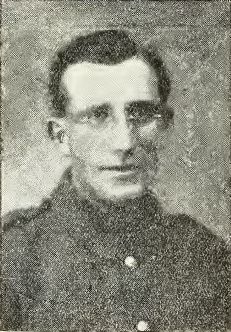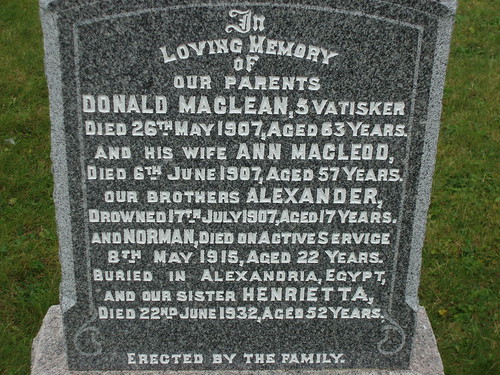 Gunner NORMAN MACLEAN
Gunner NORMAN MACLEAN
Last address in Lewis: 5 Vatisker,
Son of Donald Maclean, of 5, Vatisker Back, Stornoway.
Service unit: 4th Highland Mountain Bde, Royal Garrison Artillery
Service number: 4335
Enlisted at Stornoway
Date of death: 18 May 1915 at the age of 22
Died in Egypt
Interred: Alexandria (Chatby) Military and War Memorial Cemetery, grave L. 194
Mentioned on family gravestone in Gress Cemetery, Lewis
Local memorial: Back; Nicolson Institute WW1, middle panel
Norman was 19 years and 6 months old when he enlisted on 29 April 1912. He was sent to the Mediterranean Expeditionary Force on 19 March 1915. He arrived at Alexandria, Egypt on 2 April, and proceeded to Gallipoli on April 8th. On 7 May 1915, he was admitted to hospital in Gallipoli for a nervous breakdown. His death, according to official records, was caused by acute religious mania.
Norman is shown on the 1901 census aged 8, the son of Donald (56) and Ann (50) and brother to Catherine (25), Mary (17), Kenneth (13) and Alexander (11). By the time Norman died in Egypt, his parents had both passed away within days of each other in 1907, and his brother Alexander had drowned a few weeks after the death of his parents. Although pre-dating the birth of Norman in 1893, the 1891 census also reveals two elder sisters, Henrietta (11) and Ann (9).
His brother Kenneth served in the RNR and survived the war.







